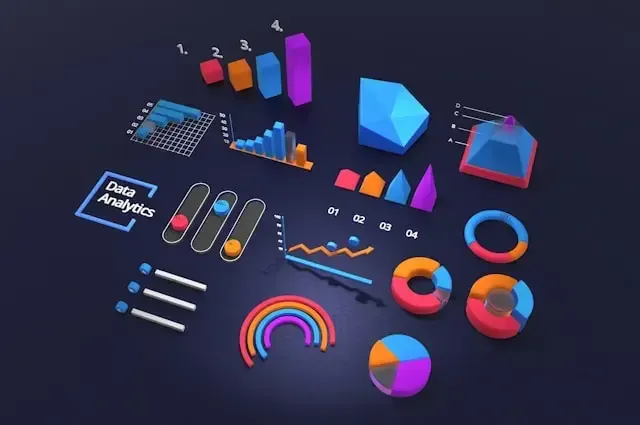In this article, we will look into each of these methods, weigh out the pros and cons for you, and try to find which one will suit your financial condition best.
Debt repayment is a rigorous undertaking, but things do get easier with a strategy on hand. In most cases, the ways out of debt are very simple: Snowball Method or Avalanche Method. Though each one of these may rid you of debt effectively, how that is accomplished differs. In this article, we will look into each of these methods, weigh out the pros and cons for you, and try to find which one will suit your financial condition best.
Understanding Debt
Let us begin by explaining what debt is and the reason behind its reluctance. A debt can be said to be incurred by a person who borrows money or does take money from another person, an individual, or another institution promising to pay back, usually with interest, within a definite period. This amount is paid as an additional charge that one incurs for borrowing someone else’s capital.
Types Of Debts
- Credit Card Debt: Most credit card loans are usually offered at very high rates of interest.
- Student Loans: Monies borrowed for education which have to be repaid along with some interest.
- Auto Loans: Taking a loan out to purchase a car.
- Personal Loans: Loans for personal needs; carry variable interest rates.
- Mortgages: Loan taken for buying a house.
The Snowball Method
Looks like the Snowball Method has something to do with rolling a ball of snow on a hill plain, in that at the beginning it is merely a small ball but as it rolls around it gathers speed and snow as more is added to it. Thus, for the Snowball Method, you begin from the least in terms of the value of debts and pay them off completely to the highest.
How the Snowball Method Works
For the snowball method, list your debts in ascending order noting the balances. Suppose, you have taken out three debts, Thirty dollars ($500) being a credit card owed, twelve hundred dollars as a personal loan, and five thousand dollars ($5,000) being a student loan. That is the order in which you would list them.
Make Minimum Payments: Make sure you only pay the minimum amount on each account to avoid being late or owing more than one month on each of your debts.
Focus on the smallest debt: Any amount above what you usually spend should be used to settle the smallest debt. For example, if you can free up an extra $100 this month, use it to pay off the $500 credit card debt and make only the basic monthly payments on the rest of your debts.
Pay the smallest first: Once it is paid off, the money you put towards it applies to the next smallest. Thus, when, in this example, the $500 credit card debt is paid off, that extra $100 is added to the $1,200 personal loan.
Repeat: Do this one by one, smallest to the largest so on and so forth. With each debt that you clear out, your “snowball” will also be getting bigger hence getting deeper to wipe out higher debts much faster and much easier.
Pros of the Snowball Method
- Psychological Boost: The psychological kick you get from rapidly paying off a small debt may encourage you to hold on to it.
- Simplicity: The procedure is simple and easily comprehensible. No headache over interest rates or interpretation of complicated formulae.
Disadvantages of the Snowball Method
- Maybe Costlier: You might wind up paying more in interest over time compared to other methods, especially if the smaller debts you have are of lower interest rates than your bigger debts.
Who Should Use the Snowball Method?
The Snowball Method works if you need motivation and quick wins. If seeing progress fairly quickly helps you stay focused, this may be your answer.
The Avalanche Method
In the Avalanche Method, it's a boulder going down the mountain. It starts slow, but as it goes, it does build momentum. This focuses on saving the most money in interest payments.
How the Avalanche Method Works
- List your debts by interest rate: You will be making a list of all your debts, ordering the highest interest rate to the lowest.
- Make minimum payments: As in the Snowball method, repayment of all outstanding debts will be made, state the amount issued to stake investors as the least amount.
- Pay the High-Interest Debt First: In the avalanche method, we give priority to the high-interest loan first.
Avalanche Method Benefits
- Saving on interest: When you decide to pay off your highest-interest debt earlier, you will not pay a lot of interest cost over that period which cuts savings and pennies.
- Effective: This is claimed to be logical because it is effective in slowly lowering the total amount of cost incurred in servicing your debt
Disadvantages of the Avalanche Method
- Slower Wins: You might not get huge wins immediately-especially when your highest-interest debt is big.
- Difficulty: It does call for you to keep track of the interest rates and do those calculations, which is a bit more involved.
Who Should Use the Avalanche Method?
If money saved is your motivator, then the Avalanche Method is for you. That is if you don't mind the pace being a lot slower initially in these budgeting activities to minimize the cost of your debt.
Which Method is Better?
These are two of the most popular techniques that people use. Let's compare these methods below to help you decide which might work best for you.
Snowball Method Pros: Quick wins, easy, motivating Less likely to pay more in interest, less focus on savings.
Avalanche Method Pros: Saves money in interest, effective Slower initial progress, more complex
Real-Life Examples
Let's illustrate things a bit better by running through a couple of real-life examples.
Example 1: The Snowball Method on Jane's Journey
Jane has three debts: Credit card: $300 balance at 15% interest Personal loan: 1,000 balance @ 10% interest Student loan: 4,000 balance @ 5% interest
Jane chose the Snowball Method. She has been concentrating most of her energy on trying to pay off her credit card first since it was the least at $300. After several months, she can pay off her credit card debt. Then she takes the money that was going to the credit card and applies that money to her loan, which now she can pay off faster. Then she takes on her student loan with this still-building snowball of payments.
Example 2: Mark's Success with Avalanche Method
Okay, let's look at Mark, who has credit card debt with $1,500 owed at 18%, a personal loan of $2,000 outstanding with 12% interest, and a car loan with the remaining amount of $5,000 at 7%.
Mark chooses the Avalanche Method. He immediately focuses his energies on eliminating his high-interest credit card debt. Of course, he then takes the money that was being tied up in that and uses it to whack the personal loan with the next highest interest rate, and finally, he pays off the car loan.
Common Pitfalls and How to Avoid Them
Whichever of the two methods you decide to employ or Avalanche-following has a couple of universal pitfalls to avoid:
- Not Sticking with the Plan: Possibly because when the desired results do not appear right away, the tendency is to become disenchanted. Stick with the chosen method; after all, remember, the most important of all is consistency.
- Piling more debt-incurring more debt while one is trying to pay off the debt that one already has-is essentially going to sabotage all efforts and make the goals a little bit further out of reach.
- Negligence of Budgeting: Without a budget, finding that extra money to put toward your debt is hard. Create a budget showing where you spend your money and commit some funds to debt repayment.
- Negative attention towards emergency savings: Having a small emergency fund can save you from going further into debt in case some unexpected expenses come up. Try saving small amounts every month along with your debt payments.
- Unrealistic goals involve setting targets that are achievable through your income and expenses. Ensure that you are not overpaying too fast, as it will eventually leave you burnt out due to frustration.
Tips for Staying on Course
- Clearly Define Goals: Elaborate on what you want, of course setting milestones for the same. Examples could be paying at least one of your debts within six months.
- Track your progress: Know every other day how much you have paid and celebrate small victories. Besides, it will keep you going.
- Utilize tools and apps: Many budgeting and payoff apps can help track your progress and keep you organized.
- Seek support: Consider hiring a financial advisor or even joining a support group to motivate yourself or seek advice. Sometimes, having someone with whom to share the burden of your journey may make all the difference.
- Educate Yourself: Read books and articles related to personal finance, credit, and debt. The more you know, the better decisions you can make.
Decision Time
So, which one is better for you, the Snowball or Avalanche? That depends on how you do your goals. Do you want to feel that quick progress, a sense of accomplishment, or do you want to save money over the long term? Take a little time to assess all of your debts, your budget, and your financial goals.
Remember, one size does not fit all. Both can work for you to get you out of debt if you consistently follow them and keep the commitment alive toward financial goals.
Conclusion
Paying off debt isn't fun, but with a decent plan, you can make some great strides. The Snowball Method and Avalanche Method prove to be two effective ways; each has its strong and weak points. Knowing such methods will help one choose the best about the situation at hand that best helps them get on top of their finances and head toward a no-debt future.
Clarity, determination, and an apt approach can help you overcome your debt by working your way up the ladder to financial freedom. You should stay motivated by the strategy and recognize at every turn that you're one more step closer to a brighter financial future. You got this!


























